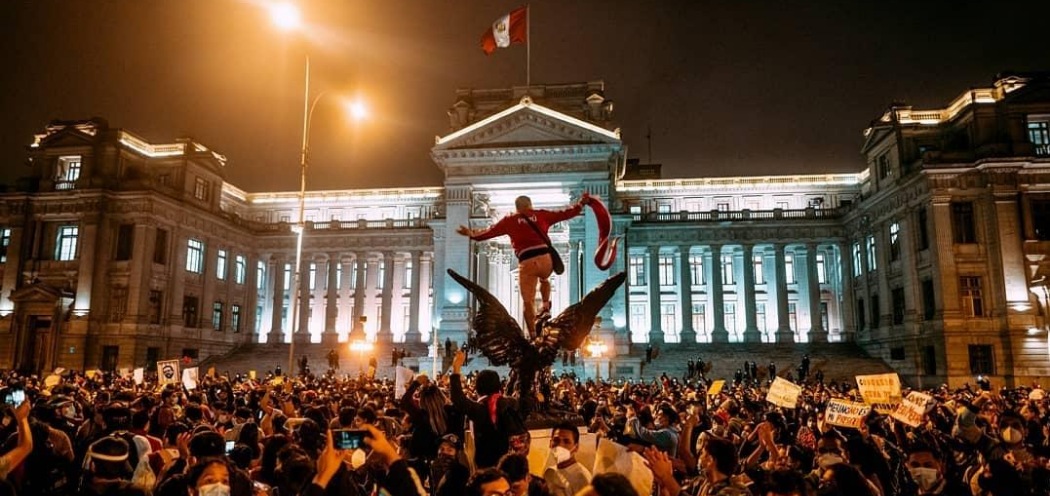Por Alberto Giovanelli
Hace apenas horas la dirigencia política peruana ha formalizado un intento para encauzar la crisis abierta en los últimos días, designando a Francisco Sagasti como nuevo Presidente en la transición hasta las elecciones de Abril del 2021.
Luego de la destitución de Martín Vizcarra a comienzos de la semana anterior, su reemplazante Manuel Merino tuvo que renunciar arrasado por la movilización popular. Durante más de 24 hs. el país no tuvo autoridades designadas formalmente y el nombramiento de Sagasti es un intento para tratar de dar respuesta a las exigencias expresadas en las calles y canalizar, por la vía electoral, el descontento contra la casta política y el reclamo de «que se vayan todos» que viene atronando en cada manifestación callejera.
Sagasti, un ingeniero de centro derecha, con participación en diversos gobiernos durante los últimos veinte años, es hoy congresista por el Partido Morado de Julio Guzmán, un empresario presentado como un outsider de la política, quien acudió al rescate de la «institucionalidad» por el dudoso prestigio ganado al ser el único partido que se opuso a la destitución de Vizcarra. Acompañarán la gestión «morada» un amplio arco variopinto que llega hasta el Frente Amplio del ex cura Arana, quien cumple en otorgar el tono de centro izquierda al nuevo gobierno. La tarea central que se proponen es detener las movilizaciones y que la Huelga General anunciada para el próximo miércoles no se concrete ó al menos sea canalizada solo como una expresión de protesta dirigida por los viejos dirigentes sindicales absolutamente desprestigiados frente al movimiento de masas.
Por estas razones es que desde la Liga Internacional Socialista insistimos en que el pueblo trabajador y la juventud no debe depositar la mas mínima confianza en el nuevo gobierno, y que solo la continuidad en las calles y la huelga general es la garantía de encontrar una salida a favor de las grandes mayorías populares. Esa salida va de la mano del llamado a una Asamblea Nacional Constituyente libre y soberana, donde se discuta como dar vuelta todo gestándose desde abajo, desde las organizaciones obreras, estudiantiles y campesinas la posibilidad que gobiernen los que nunca gobernaron, los trabajadores y el pueblo peruano.




